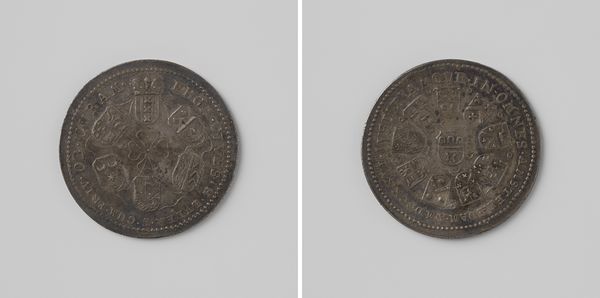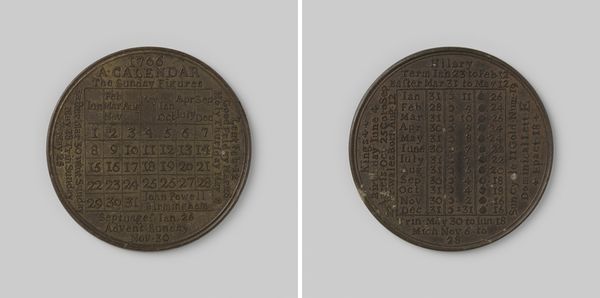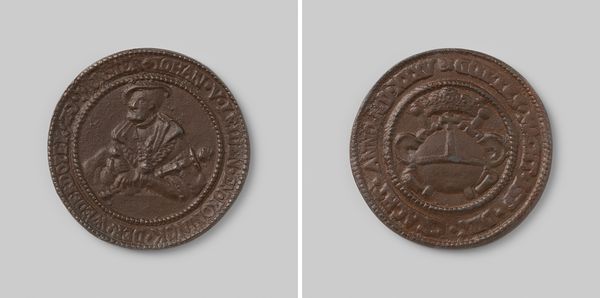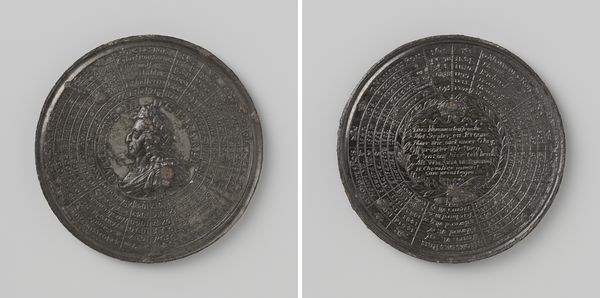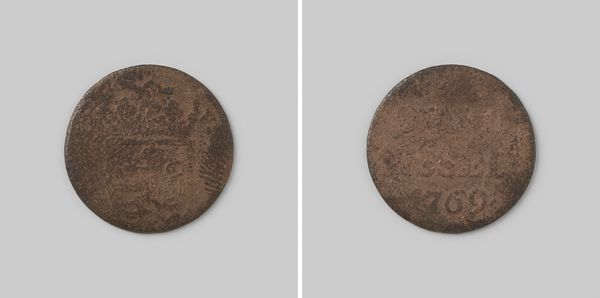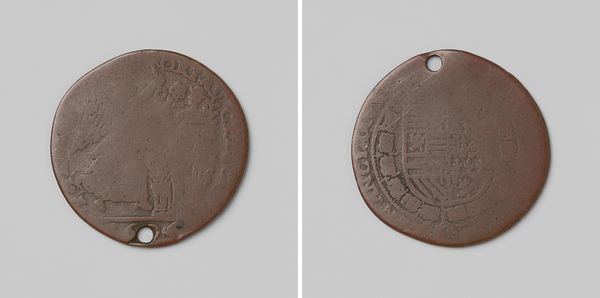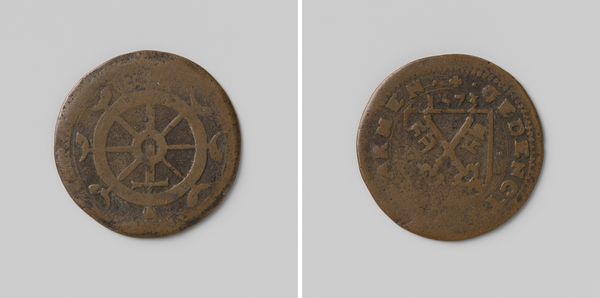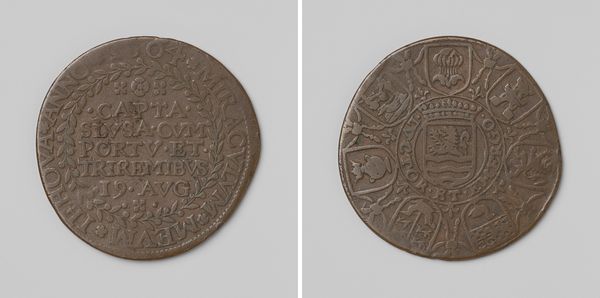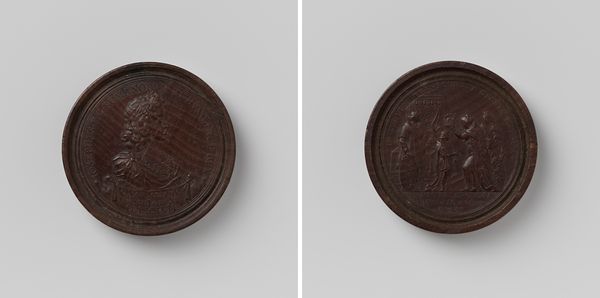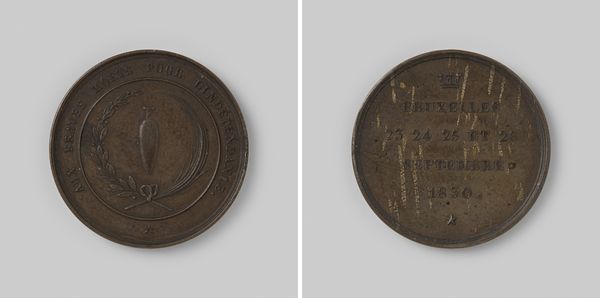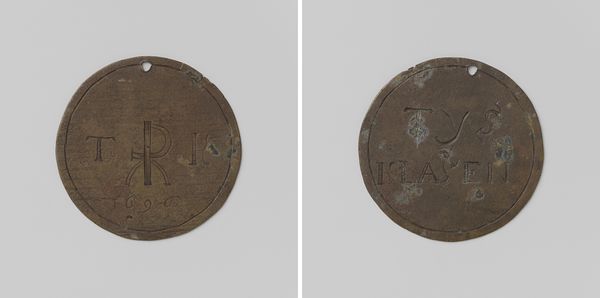
metal, bronze
#
medal
#
baroque
#
metal
#
bronze
#
geometric
#
ceramic
#
history-painting
Dimensions: diameter 5.1 cm, weight 59.83 gr
Copyright: Rijks Museum: Open Domain
Curator: Take a look at this intriguing bronze medal, "Paus Gregorius XIII, op de invoering van de nieuwe tijdrekening," crafted sometime between 1694 and 1720 by Nicolas Chevalier. What impressions strike you? Editor: Wow, it has the weight of history, literally. It looks almost like a talisman. But what catches my eye immediately is the intense geometric pattern on one side. It feels like staring into a code, some forgotten calculation of the cosmos. Curator: The circular form itself is highly significant. The circle has represented cyclical time and cosmic unity since antiquity. It embodies continuity. Within the medal, Chevalier memorializes Pope Gregory XIII’s crucial role in reforming the calendar. The new Gregorian calendar addressed inaccuracies in the Julian calendar, solidifying its place in the western world and shaping modern timekeeping. Editor: So, this wasn't just about dates, it was about power, right? Whoever controls time, controls, well, pretty much everything. Curator: Absolutely. Symbols like geometric shapes would underscore this control, signifying order and divine mandate. Consider that even something as seemingly mundane as a calendar possesses the potential to solidify cultural power and influence for centuries. It reveals how closely tied these notions were in the collective memory of the Baroque. Editor: It is such an ordinary thing, a calendar. You almost take it for granted, but this really reminds me how shaped we are by time. The weight of these calculations etched into the metal itself; you almost feel that anxiety, of getting time "right," but I guess right for whom? And according to what authority? Curator: The visual vocabulary Chevalier employs underscores these issues of power. Medals are never neutral. Chevalier employs an almost obsessive geometry to drive home how papal power reshaped people's lived experiences of time and everyday lives. Editor: Looking at it this way, you have to ask whether it is a source of empowerment or perhaps manipulation. Makes you think about time, in general. Thank you. Curator: Agreed. The intersection of geometry and papal authority presented here has implications even today.
Comments
No comments
Be the first to comment and join the conversation on the ultimate creative platform.
